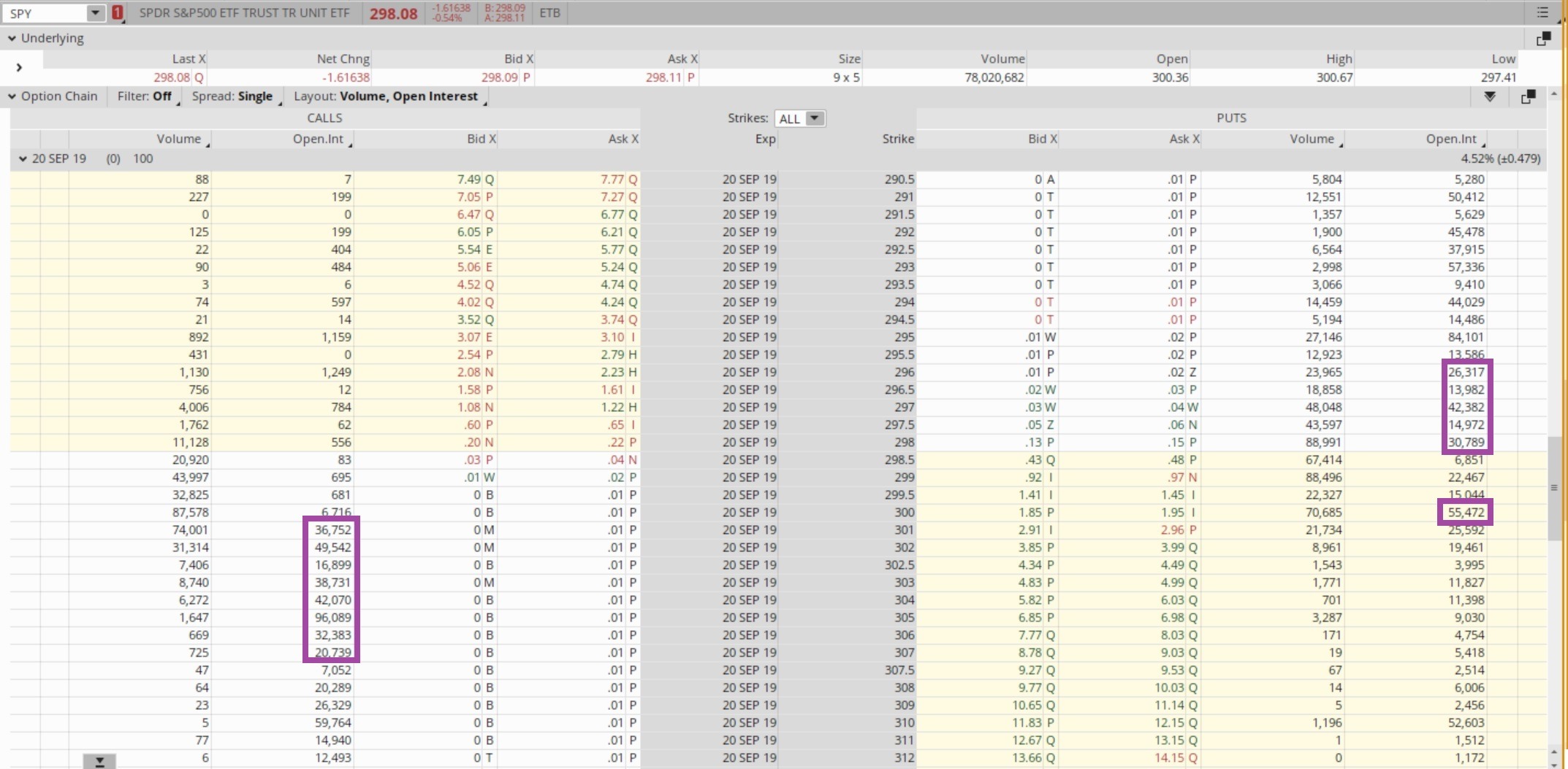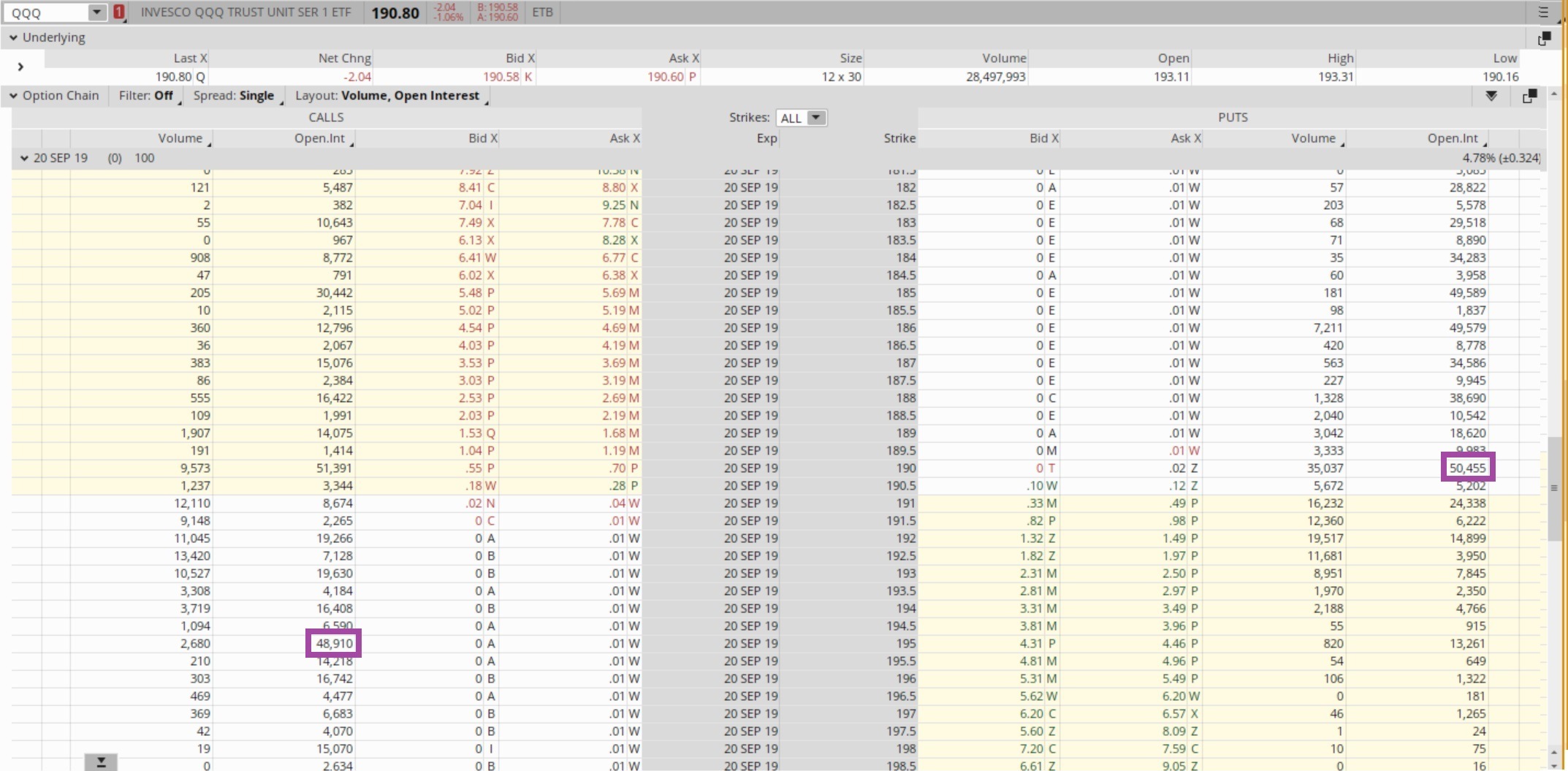What Is Quadruple Witching Day?
Quadruple witching day is the last trading day for monthly stock options, monthly index options, single stock futures and many futures contracts. For 2019, this day fell during the week of Sept 15 – 21. Though the markets are always subject to some manipulation, on quadruple witching day, the level of stock market manipulation is typically greater than on any other day.
I happen to be teaching a class in Online Trading Academy’s Philadelphia center on quadruple witching day and explained to them that, to understand what is happening you must first understand the mindset of many of the professional traders in the major institutions. For example, when trading options, many pros would prefer to sell options instead of buying them, which makes sense when you think about it.
Buying vs. Selling Options on Quadruple Witching Day
Traders who buy options only make money when the price of the underlying security moves in their favor within the allotted time frame. In contrast, those who sell an option could profit from changes in volatility and time decay. In that case, they could make money if prices move in their favor, if prices move slightly against them, or if price does not move at all! There are three possibilities for profit when selling options versus only one for those who buy. This gives options traders a higher probability for reward when selling options than when buying them.
This is where quadruple witching day manipulation comes into play. The traders who have sold options want to gain from them expiring worthless. It is like your insurance company hoping that you drive safely and never file a claim. Your policy expires, they keep your premium, and you renew the policy and pay a new premium!
What Is Pinning?
To realize gains from large option or even futures positions, institutional traders will often buy or sell the underlying stocks to push prices to a point where the close will benefit them. This action, in which traders attempt to pin the price of the stock or the broad market to profit from a derivative position, is called pinning.
Pinning is illegal in most exchanges in the world and traders who participate in this high-volume trading to manipulate prices could face penalties. The problem is in catching the culprit in order for the authorities and the exchanges to punish them.
So, what should a retail trader do about this pinning? Recognize that it does happen and either stay out of the market or trade the momentum. Trading at quadruple witching day can be very risky, as traders need to be quick in their decision to enter and exit when the momentum is slowing, not reversing. It is not for everyone, but for those who are prepared, it is possible to participate in the market moves caused by pinning that occurs in the markets every expiration day.
Strategy for Trading at Expiration
Open interest can be used to identify where institutional traders are accumulating large positions. Open interest is a statistic unique to options and futures trading. It is the total number of contracts that are currently in existence that have not been offset by closing trades. This stat is different than volume, which is the number of contracts traded for the day.
To illustrate, if a trader were to buy an option to open a position and the person who sold the option is also opening a new position, volume would increase by one and open interest would increase by one. If they then sold the option to someone else who did not already have a position, then volume would increase but the open interest would not change because they transferred their interest to someone else.
In the case of selling an option, open interest would have decreased if they had sold the option to someone who had already sold an option and was buying to close their position. Since both of parties are closing positions, the option contract is not needed anymore, and open interest goes down even though the transaction increases the volume reported.
Understanding open interest can seem confusing at first, but our options and futures instructors at Online Trading Academy do an incredible job at making difficult concepts easy to understand in the classroom.
Open interest is important to stock traders and investors as well as option traders because it shows us where traders are putting their money. Open interest can also help as an odds enhancer when analyzing supply and demand zones. If there is high open interest at or just beyond a zones, the zone is more likely to hold as many traders sold options beyond it.
This week, I showed the students the open interest on the SPY and QQQ along with the zones we identified. In the SPY, you can see the huge open interest on both the calls above 300 and the puts below it. Even though prices were much higher on Thursday, on Friday, the markets opened near the $300 price point and tried to stay there for the day. Unfortunately for many traders, there was news about the trade war that caused a panic and the selloff that followed drove prices just above the $298 level where those puts expired worthless.
For the QQQ, the Nasdaq ETF, there was a similar move. Prices shied away from the $195 price where there was high open interest on the calls. After the major selloff, the prices closed just above the $190 put open interest of over 50,000 contracts.
Watching the potential pinning activity in the week before option expiration and the open interest on the weekly options can also assist those traders looking to make profits on short-term swing trades as well.
Trades should only be entered based on supply and demand zones. The open interest information provided here is only a decision support tool. To learn how to identify the zones accurately and efficiently, visit your local Online Trading Academy office today.
Neither Freedom Management Partners nor any of its personnel are registered broker-dealers or investment advisers. I will mention that I consider certain securities or positions to be good candidates for the types of strategies we are discussing or illustrating. Because I consider the securities or positions appropriate to the discussion or for illustration purposes does not mean that I am telling you to trade the strategies or securities. Keep in mind that we are not providing you with recommendations or personalized advice about your trading activities. The information we are providing is not tailored to any individual. Any mention of a particular security is not a recommendation to buy, sell, or hold that or any other security or a suggestion that it is suitable for any specific person. Keep in mind that all trading involves a risk of loss, and this will always be the situation, regardless of whether we are discussing strategies that are intended to limit risk. Also, Freedom Management Partners’ personnel are not subject to trading restrictions. I and others at Freedom Management Partners could have a position in a security or initiate a position in a security at any time.
Editors’ Picks
EUR/USD edges lower toward 1.0700 post-US PCE

EUR/USD stays under modest bearish pressure but manages to hold above 1.0700 in the American session on Friday. The US Dollar (USD) gathers strength against its rivals after the stronger-than-forecast PCE inflation data, not allowing the pair to gain traction.
GBP/USD retreats to 1.2500 on renewed USD strength

GBP/USD lost its traction and turned negative on the day near 1.2500. Following the stronger-than-expected PCE inflation readings from the US, the USD stays resilient and makes it difficult for the pair to gather recovery momentum.
Gold struggles to hold above $2,350 following US inflation

Gold turned south and declined toward $2,340, erasing a large portion of its daily gains, as the USD benefited from PCE inflation data. The benchmark 10-year US yield, however, stays in negative territory and helps XAU/USD limit its losses.
Bitcoin Weekly Forecast: BTC’s next breakout could propel it to $80,000 Premium

Bitcoin’s recent price consolidation could be nearing its end as technical indicators and on-chain metrics suggest a potential upward breakout. However, this move would not be straightforward and could punish impatient investors.
Week ahead – Hawkish risk as Fed and NFP on tap, Eurozone data eyed too

Fed meets on Wednesday as US inflation stays elevated. Will Friday’s jobs report bring relief or more angst for the markets? Eurozone flash GDP and CPI numbers in focus for the Euro.
RECOMMENDED LESSONS
Making money in forex is easy if you know how the bankers trade!
Discover how to make money in forex is easy if you know how the bankers trade!
5 Forex News Events You Need To Know
In the fast moving world of currency markets, it is extremely important for new traders to know the list of important forex news...
Top 10 Chart Patterns Every Trader Should Know
Chart patterns are one of the most effective trading tools for a trader. They are pure price-action, and form on the basis of underlying buying and...
7 Ways to Avoid Forex Scams
The forex industry is recently seeing more and more scams. Here are 7 ways to avoid losing your money in such scams: Forex scams are becoming frequent. Michael Greenberg reports on luxurious expenses, including a submarine bought from the money taken from forex traders. Here’s another report of a forex fraud. So, how can we avoid falling in such forex scams?
What Are the 10 Fatal Mistakes Traders Make
Trading is exciting. Trading is hard. Trading is extremely hard. Some say that it takes more than 10,000 hours to master. Others believe that trading is the way to quick riches. They might be both wrong. What is important to know that no matter how experienced you are, mistakes will be part of the trading process.




